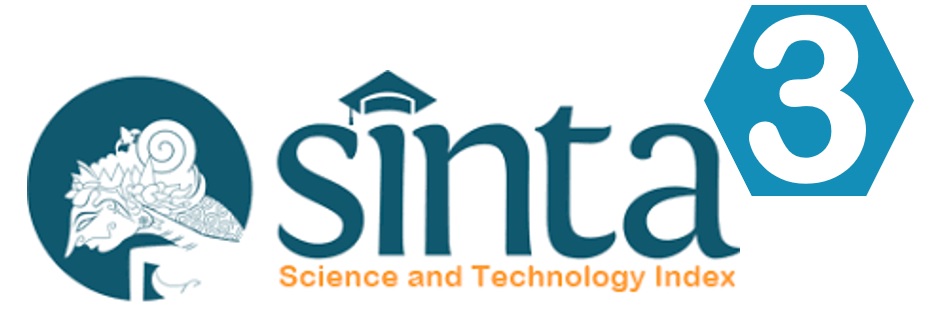Possessive Expressions in Javanese
DOI:
https://doi.org/10.32734/ijcas.v4i1.3848Keywords:
Expressions, Expression of Possessive Relationships, Possessive ConstructionAbstract
This study aims to describe the characteristics of Possessive Construction in Javanese and relations of expressions between Possessor (PR) and Possessum (PS). The source of data are texts in Javanese from Djaka Lodang Magazine Volume XXII, XXIV, XXIX year 2017 and Panjebar Semangat Magazine Volume 29, 19, and 20 from May until July 2018 which contains Possessive Constructions in Javanese also informant who is a native speaker of Javanese. The data are analyzed using Simak Method, with base Sadap technic and advance Simak-Bebas libat cakap technic and Catat technic, meanwhile technic for analyzing the data used are Agih Method to determine the Possessive Construction dan Padan Method to determine the relation between PR and PM elements. Javanese Possessive Constructions marked with clitics -e or Â-ne as possessive marker. The results show Javanese Possessive Constructions meaning exists at polymorphemic level, phrase level, and clause level. On polymorphemic level, possessive meaning expressed by nouns followed by enclitics persona pronoun. On Phrase level, possessive meaning expressed by noun which followed by noun persona and noun followed by noun. Persona pronoun acts as PR. Noun which acts as PR are (Ilahi), animal, plants and (concrete) noun. On clause level possessive meaning expressed by verb which occupy predicate (P). Noun occupying subject in clause recognized as possession (PM). In Javanese, it is found Possessive Construction which sates the relationship of proprietary in the form of; Possessive Construction in which PM elements is non-humane noun and PR elements is humane noun or persona pronoun, PM element is humane noun and PR element is humane (self-name) or persona pronoun, and PM element is non-living noun and PR element also non-living noun.
Downloads
References
F. Ameka, Possessive Construction in Likpe (Sεkpεle’). In Aikhenvald A.Y., Dixon R.M.W (Eds.) Possession and Ownership: A crosslinguistic typhologi. Oxford: Oxford University Press, pp.224, 2013.
G. Storto, Possessives in Context Issues in The Semantics of Possessive Construction (disertasi). University of California, 2003.
V. Vorob’jova and I. Novitskaja, Possessive Constructions in The Obdorsk Dialect of The khanti Language. Linguistica Uralica, pp.129- 150, 2018.
H. Alwi, Tata Bahasa Baku Indonesia. Jakarta: Balai Pustaka, 1998.
M. Ramlan, Tata Bahasa Indonesia. Yogyakarta: Andi Offset, 1989.
B. Heini, Possesion, Cognitive Sources, Forces and Grammaticalization. Cambridge: Cambrige University Press, 1997.
S. Peters, The Semantics of Possessives. Stanford University Dag Westerstahl Stockholm University and University of Gothenburg, 2013.
T. Setiawan, Konstruksi posesif Bahasa Indonesia dalam Rubrik Surat Pembaca. Lap Penelit Mandiri, Fak Bhs dan Seni Univ Negeri Yogyakarta, 2015.
Taylor, “Possession†in Concises Encyclopedia on Grammatical Categories. Cambridge : Cambridge University Press, 1999.
N. Boneh and S. Ivy, Deconstructing Possession. In: Natural Language and Linguistic Theory, pp. 1–40, 2010.
Y. Sulistyono, Karakteristik Alat perelatif Sing dan Kang/Ingkang serta Strategi perelatifan dalam Bahasa Jawa. Jurnal Kajian Linguistik dan Sastra. Vol. 27, no. 1, pp. 61-67, 2015.
E. Suwatno, Konstruksi Posesif dalam Bahasa Jawa. Lap Penelitian, Balai Bhs Yogyakarta, 1999.
Djaka Lodang magazine, volume XXII, XXIV, XXIX in 2017
Panjebar Semangat Magazine, volume 29, 19, 20 from May to July 2018
Sudaryanto, Metode dan Aneka Teknik Analisis Bahasa: Pengantar Penelitian Wahana Kebudayaan Secara Linguistik. Yogyakarta: Sanata Dharma University Press, 2015.
Sudaryanto, Tata Bahasa Baku Bahasa Jawa. Duta Wacana University Press, 1991.
Wedhawati, Tata Bahsa Jawa Mutakhir. Yogyakarta: Kanisius; 2005.
M. Gerner, "The Zoom- onpossessee Construction in Kam (Dong): the Anatomy of a New Construction Type," Linguistics. Cambridge: Cambrige University Press, 2005.
Downloads
Published
How to Cite
Issue
Section
License
Copyright (c) 2020 Kamilatun Baroroh, Mulyadi Mulyadi

This work is licensed under a Creative Commons Attribution-ShareAlike 4.0 International License.













